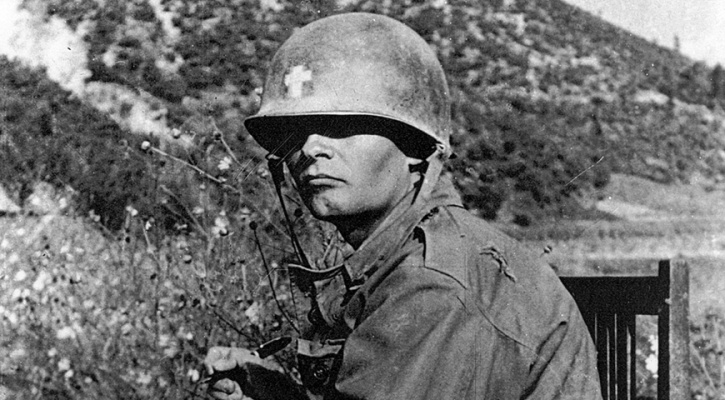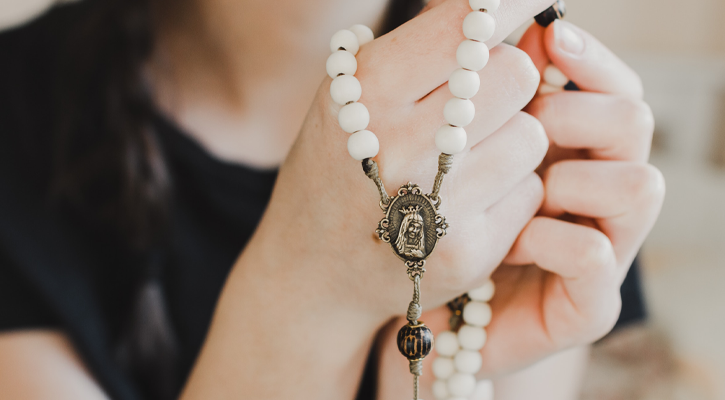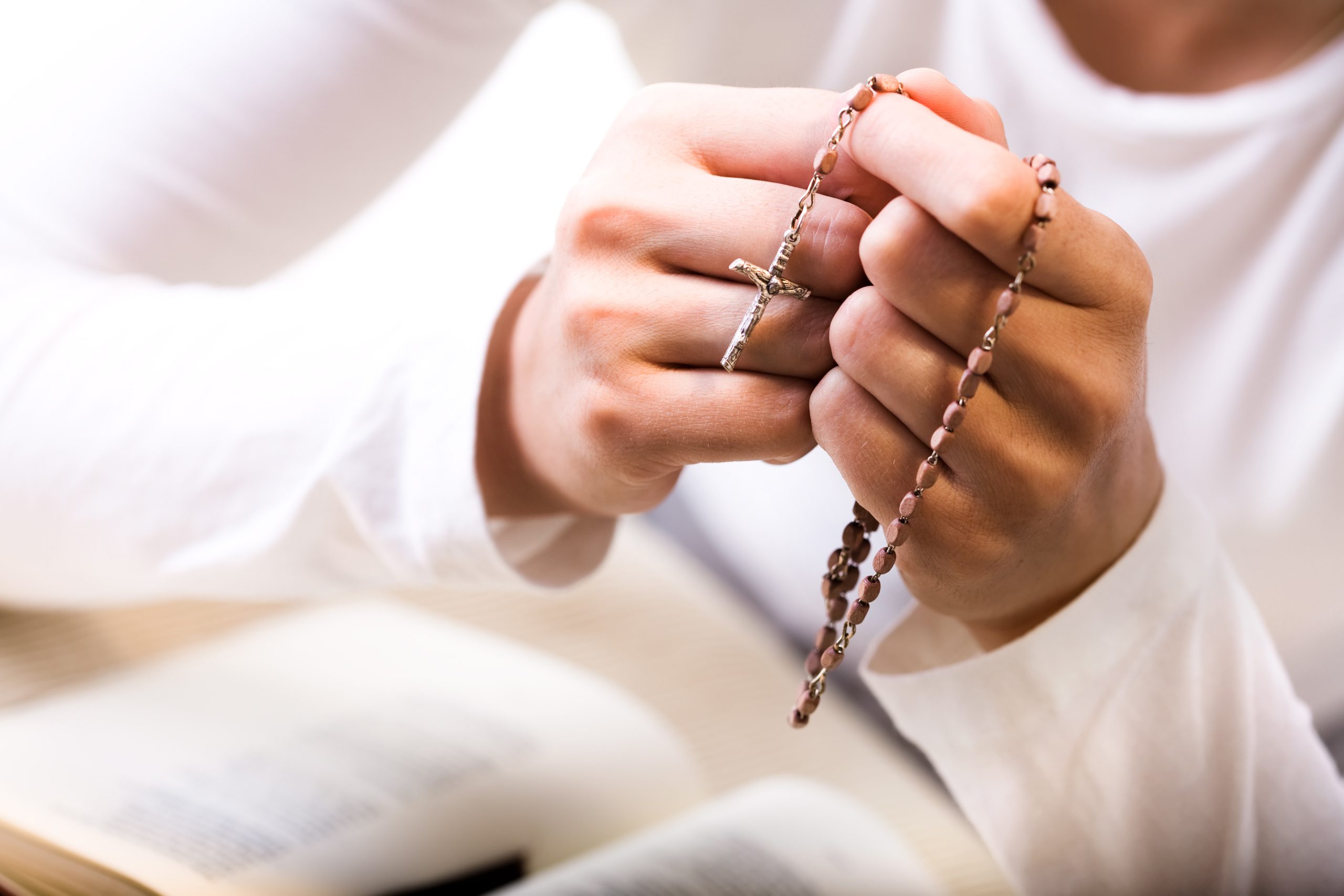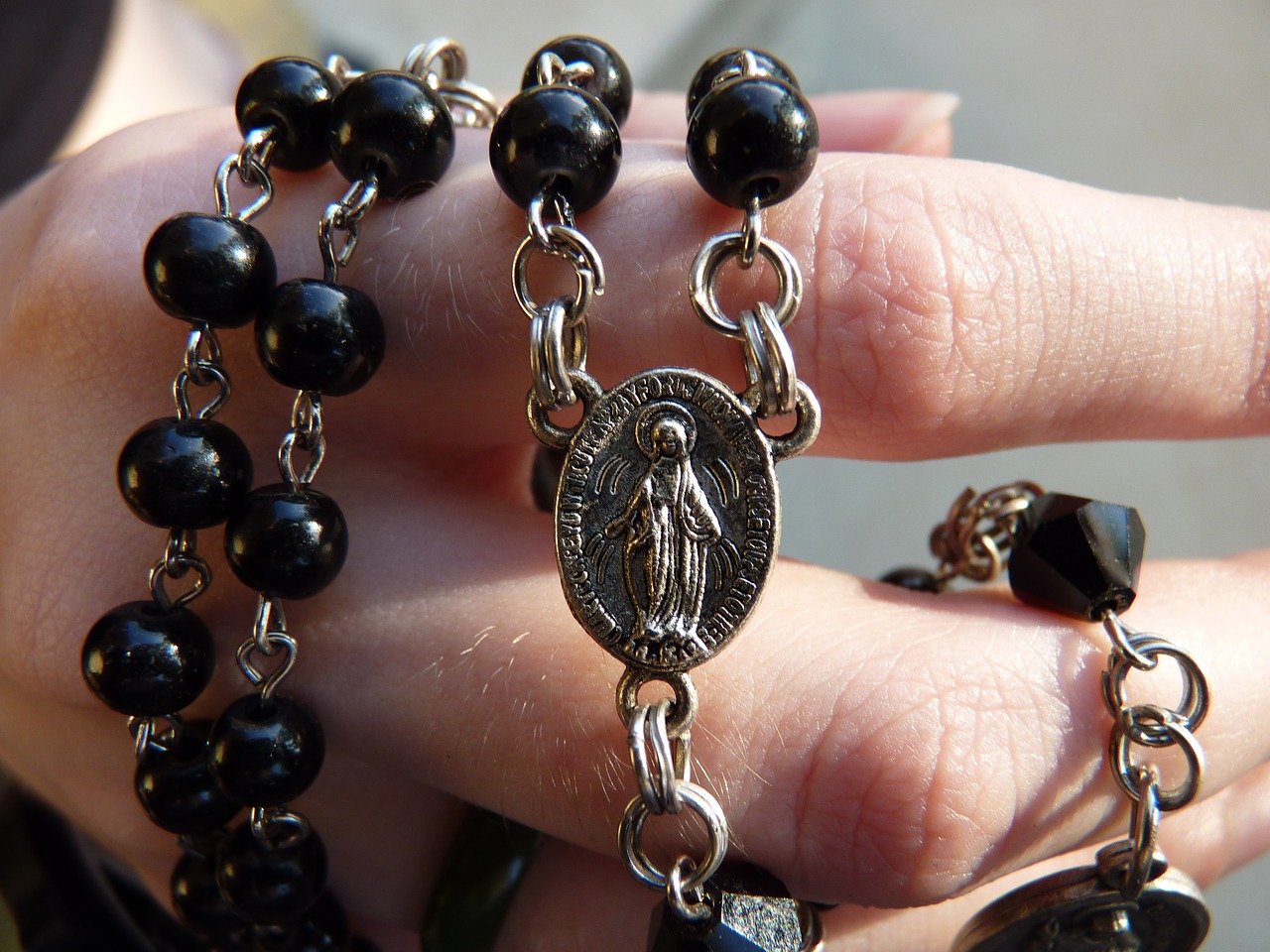Service. That is the word that can be used to sum up the life of Korean War chaplain Father Emil Kapaun.
In September 2021,a military plane departed Honolulu, Hawaii, headed toward Wichita, Kansas. Aboard the plane were the long-lost remains of Father Emil Kapaun, a highly decorated Army chaplain who died in a Korean POW camp. He was buried in an unmarked grave near the Yalu River and seemingly lost forever.
That was, however, until March 2021, when it was discovered through forensic science that Father Emil had actually been buried in the National Memorial Cemetery of the Pacific in Honolulu. Remains of many US soldiers were moved there from North Korean burial sites in the 1950s and 1990s by the Defense POW/MIA Accounting Agency.
The road to bringing Father Emil home had been a long one—70 years to be exact. So when his nephew Ray Kapaun got the call about his uncle’s identification, he let it go to voicemail. After hearing the message, though, Ray’s wife said she thought he should call them back.
Ray called and got news he never thought he’d receive. He was told that they had identified his uncle’s remains. “It floored me,” Ray says. “If the pope would have called me and said, ‘We just declared him a saint,’ I would have been less surprised.”
Father Emil returned home to full military honors, complete with a 21-gun salute, color guard, caisson and riderless horse, and some of his fellow POWs to welcome back their beloved chaplain. A funeral was celebrated for him. Previously, in the absence of his body, he had only received a blessing.
Scott Carter, coordinator of Father Emil’s sainthood cause, said the funeral “was a good reminder that you can love both God and your country.”
The Journey Continues
Even before Father Emil’s remains were located and returned to Kansas, though, many people were already convinced he was a saint. In 1993, the Archdiocese of the Military Services opened the chaplain’s cause, which is when Father Emil was named a Servant of God. In 2008, the Diocese of Wichita picked up the cause and opened its diocesan phase.
In this phase, according to Father John Hotze, the episcopal delegate of the cause, the diocese conducted an exhaustive investigation of Father Emil’s life. Father Hotze handles the chaplain’s sainthood cause on the local level and serves as an intermediary between the diocese and the Vatican regarding anything related to the cause.
Interviews were conducted with about 50 people who knew Father Emil from the various chapters of his life. A theological committee evaluated any writings, videos, or recordings related to the chaplain to make sure they were doctrinally sound. A historical committee was formed to look into everything they could find that had been written about Father Emil.
About 8,000 pages of documentation later, the diocese closed the first phase of the cause for beatification and canonization in July 2011. They sent all the pages—16,000, counting duplicates—to the Vatican for review. They are awaiting word regarding the next steps. In the meantime, the diocese will still work on the cause so that they are ready to go as soon as they get word that Father Emil has been named venerable.

Using skills he learned growing up, Father Emil fixed up a bike that he would ride to bring food and companionship to men in the field.
When asked if he discovered anything in the process that surprised him, Father Hotze says nothing surprised him but instead made things about the priest more evident to him.
“One of the things that I’ve always thought has been the appeal of Father Kapaun is that he’s proof that any of us can be a saint,” says Father Hotze.
In the meantime, Father Emil’s life and story are still very interesting to people. There is his tomb at the cathedral that many come to visit, there is his family farm in Pilsen, Kansas, that contains many important items from the priest’s life and many other things related to Father Emil. Carter takes care of a good deal of that, but he considers it all a privilege.
One of the greatest privileges, he says, “is being able to talk with and hear from people not just in Kansas, not just in the United States, but all over the world who have been impacted by his story. I think the Holy Spirit is using his life to inspire other people to be saints in their own ways—little ways.”
The Road to Korea
Emil Kapaun came from humble beginnings. He was born on Holy Thursday in April 1916 in Pilsen. He and his brother, Eugene, grew up helping out on the family farm during the lean years of the Dust Bowl. During that time, he became somewhat skilled at fixing and building things. (Remember that point. It’ll be important later.)
Father Hotze points out that Emil grew up having nothing and that he had nothing when he went to the seminary to study for the priesthood. “Yet he was able to use the things he had been given and use them in service to God and service to his neighbors and even his enemies,” says Father Hotze.
“It’s just an ordinary person who did great things with the meager things he has been given.”
Father Emil was ordained to the priesthood in 1940. Over the course of the next eight years, his ministry took on many forms, from parish life to military service. He spent time serving as a chaplain for soldiers in India and Burma at the end of World War II. At that time, the Army recognized his faithful commitment to his duties and promoted him to the rank of captain. But he was called back by his bishop, who requested that he go to Catholic University of America to earn a master’s degree in education, using the GI Bill.
Once he completed his studies, though, he asked to return to the military. It was ministering to the enlisted personnel to which he felt most called. In late 1948, he was granted his request and reported to the Anti-Aircraft Artillery Corps at Fort Bliss, Texas.
Two years later, Father Emil, along with his unit—the 8th Cavalry Regiment, 1st Cavalry Division—became some of the first American troops sent to assist the South Koreans in the Korean War. Fellow soldiers have recounted the heroics of Father Emil, who was well-known for facing danger in order to comfort a soldier, retrieve wounded soldiers amid gunfire, or enter no-man’s-land to provide a dying soldier with last rites. Sometimes, though, he would just sit with a soldier and talk. What the soldier’s religion was didn’t matter. They were all just Father Emil’s men.
He perhaps showed his care for “his men” more than ever on November 2, when Father Emil and his unit were captured by a regiment of Communist soldiers from North Korea and China. When Father Emil saw a Communist soldier ready to shoot wounded US soldier Sgt. Herb Miller, the priest rushed over, pushed the gun aside, and picked up Miller. Stunned by the chaplain’s actions, the solider let the two men live.
Prison Camp No. 5
While in the camp, Father Emil cared for his fellow soldiers, using skills he had learned on the farm years ago. He would fashion scraps of metal into small bowls in which he could boil water. Given that dysentery was a big concern and was affecting many of the soldiers, Father Emil would hold the bowls of water over the fire to disinfect it or to melt snow he had collected.
He would wash the prisoners’ clothes and pick lice from their bodies. And he would sneak out, when possible, to find food to bring back to the soldiers.
“He would use whatever he had to survive,” says Father Hotze, “which is basically what he did when he was growing up on the farm during the Depression.”
And those were just the corporal works of mercy Father Emil provided for his fellow POWs. He also supported them emotionally and spiritually, leading them in prayer, celebrating Mass with them, or simply reminding them that they could survive this.
In fact, says Father Hotze, “All of the POWs that I interviewed said they would not have made it if it hadn’t been for Father Kapaun.”
Eventually, Father Emil himself came down with pneumonia and developed a blood clot in his leg. As he struggled, the guards saw an opportunity to rid themselves of the priest who was helping to lift up the other prisoners.
When the guards came to take Father Emil to the medical tent, also known as the death house, his fellow POWs struggled to keep their chaplain from being taken away. Father Emil comforted them, saying: “Don’t worry about me. I’m going where I always wanted to go, and when I get there, I’ll say a prayer for all of you.” He then blessed his captors, forgiving them for their actions.
Two days later, on May 23, 1951, Father Emil died—alone and only 35 years old.
A Powerful Presence
Ray Kapaun wasn’t even born when his Uncle Emil died. He and his siblings always knew about Father Emil and what he did during the war, he recalls, but his parents didn’t often go into much detail. He didn’t find out his uncle’s full story until one day when he was snooping around his uncle’s house and found a story about Father Emil in a 1954 issue of the Saturday Evening Post. The article was written by Mike Dowe, a fellow POW with Father Emil, as told to Harold H. Martin.
“He wore the cross of the chaplain branch instead of the crossed rifles of the infantry, but he was, I think, the best foot soldier I ever knew, and the bravest man, and the kindest,” Dowe wrote. “His name was Emil Joseph Kapaun, and he was a priest of the Roman Catholic Church.”

Father Emil, seen here celebrating Mass for the soldiers of his unit, often used the hood of his Jeep as an altar. It is likely that this is the last photo taken of him before being captured.
Dowe recounted the many ways Father Emil ministered to the soldiers during their dark days of captivity. “By his very presence, somehow, [Father Kapaun] could turn a stinking, louse-ridden mud hut, for a little while, into a cathedral. He did a thousand little things to keep us going,” Dowe said.
Over the years, Ray says he has learned so much more about his uncle, often from the people who served with him in the Army. And with each story he hears or person he talks to, he realizes this about his uncle: “He was an ordinary person who did extraordinary things. He went above and beyond and really did sacrifice himself for others.”
An Ongoing Influence
In the years since his death, Father Emil has been the subject of books, movies, songs—one even by his nephew Ray—and a great number of articles. He has had children named after him, prayers devoted to him, and a yearly pilgrimage made in honor of him.
In April 2013, Father Emil was posthumously awarded the Medal of Honor. Ray Kapaun accepted the medal on his uncle’s behalf from former President Barack Obama. This medal is the highest award given to a member of the military, and Father Emil is one of only five chaplains to have received it. He had already been awarded the Bronze Star for bravery in battle and received the Distinguished Service Cross for his actions during and after the Battle of Unsan.
In his speech before presenting the medal, President Obama referred to Father Emil as a “shepherd in combat boots.” He recalled the story of the priest’s service, saying, “This is the valor we honor today—an American soldier who didn’t fire a gun, but who wielded the mightiest weapon of all, a love for his brothers so pure that he was willing to die so that they might live.”
Because of COVID-19 and personnel changes at the Vatican’s Dicastery of Saints, Father Emil’s cause has been slowed. But Ray is not deterred by that and says of his uncle: “It’s not if he’s declared a saint, it’s when. I’m not going to think about him any differently. He’s already a saint as far as I’m concerned.”
Well aware of the length and slow pace of the sainthood process, Ray said he would be surprised and thrilled if his uncle were to be declared a saint during his lifetime. “But, like I said, after bringing his remains home, I’m never saying never again,” he says with a laugh.
Kapaun’s Crucifix
When people walk into the front entrance of Kapaun Mt. Carmel Catholic High School in Wichita, Kansas, they will see a 4-foot-tall crucifix. What they may not know, however, is the story behind it and its connection to the school’s namesake.
The crucifix was created a year after Father Emil’s death by POW Lt. Col. Gerald Fink, a pilot who had been shot down and captured. Fink would whittle on wood and caught the attention of his fellow POWs. They asked if he would carve them a crucifix so they could remember Father Emil. Fink, who was Jewish, was so taken by the stories of Father Emil that he said he would. He hand-carved the figure from scrub oak found around the camp. The cross was made from furniture pieces found in the camp. And the crown of thorns on Christ’s head was made from radio wire to resemble the barbed wire that encircled the POW camp.
Father Hotze says the POWs asked Fink how he knew what Jesus looked like in order to carve him. He said that Fink told them, “That’s not Jesus, that’s Father Kapaun.” He used the descriptions they had given him of Father Emil to carve the corpus.
When the POWs were released from the camp in 1953, nearly two and a half years after Father Emil died, three of the prisoners carried the cross out with them.







